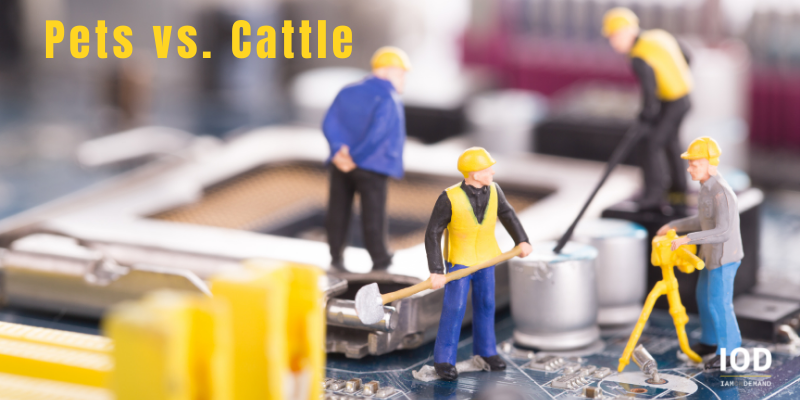Pets vs. cattle has become a famous analogy for server operations in the infrastructure management space. With the rise of cloud computing, businesses need to have a competitive edge with their applications and ensure high availability and faster response time.
Servers in on-premises data centers are generally viewed as “pets”, whereas servers in the cloud are considered “cattle”. Pets are indispensable servers where you can make configuration changes should problems arise While, Cattle are servers that can be deleted and rebuilt from scratch in case of failures.
In this article, I’ll dive into the concept of immutable infrastructure and explain why it’s starting to dominate over the old principles of mutable workloads. I’ll also discuss how to manage modern infrastructure and use the principle of immutability to build cloud-native architectures.
Mutable vs. Immutable Infrastructure
There is a difference between how we treat servers in an on-premises data center versus in the cloud. Unlike traditional, on-premises servers—which must be maintained and can’t be destroyed—servers in the cloud are treated as transient. The major cloud providers like AWS, Azure, and Google Cloud can help you achieve immutable infrastructure at different layers in your application stack.
- Mutable infrastructure: Servers can be modified manually. You can log into the server, make configuration changes, and install/modify packages.
- Immutable infrastructure: Once deployed, servers can’t be modified. If you need to make any configuration changes, you can update the existing image and spin up a new server to replace the old one. No configuration or code changes are allowed on the server while it’s running.
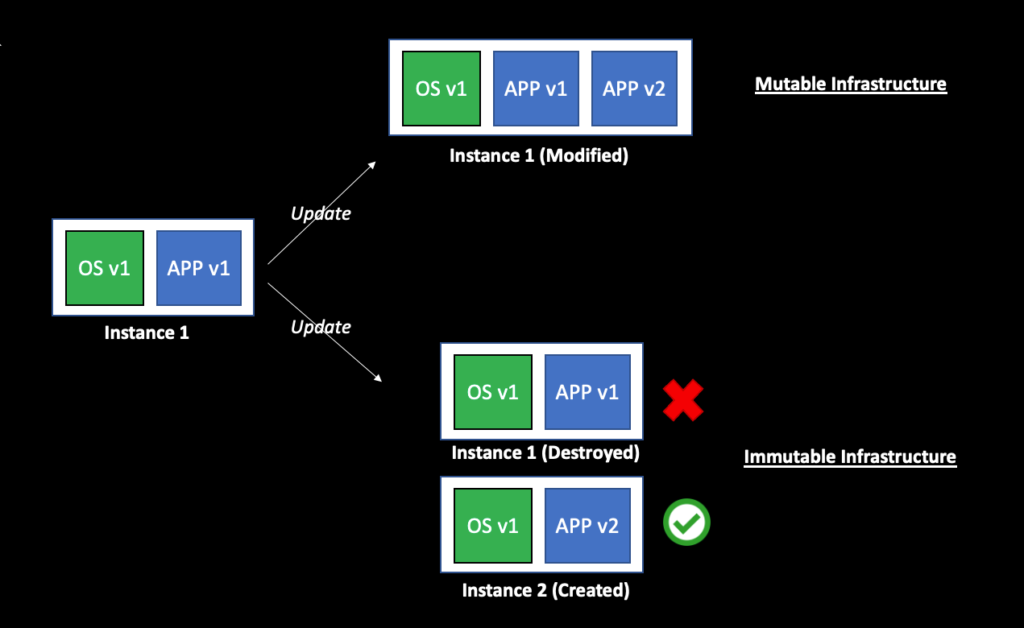
Benefits of Immutable Infrastructure
Distributed systems are rapidly adopting the concept of immutable infrastructure. Building immutability into your system architecture has several benefits. In simple terms, having an immutable infrastructure means that if you want to make any configuration changes to a server, you don’t modify the existing server—rather, you build a new server with the updated configurations.
Modifying a server while it’s running is an error-prone process and can introduce catastrophic changes. Building your infrastructure from the ground up with the new configuration and having a proper testing strategy before deployment is the way to go.
Simplifying Your Operations
When you don’t have to deal with drift detection within your components and can replace your components instead of modifying them, your operations become simpler. By having an immutable infrastructure, there is no need to manage a large number of production servers. This means your development teams can focus on application changes and let your infrastructure automation ensure consistency between environments.
Quick Recovery from Failures
When dealing with infrastructure, failures are inevitable. But having the ability to replace your nodes in an automated way helps you recover from failures quickly. Without an immutable infrastructure, you’ll need to spend time troubleshooting the issue and fixing it. However, you can terminate and rebuild an instance from scratch with an immutable server using an updated base image.
There’s no need to deal with identifying configuration changes between servers as part of this process. With an immutable server, you need to maintain the base image in source control. Configuration updates are applied to the base image and tested adequately before spinning up a new server. Just like your application code, any server configuration changes also need to follow the CI/CD process.
Scaling Your Infrastructure Dynamically
Once you start using the base images to launch your infrastructure automatically, you can dynamically scale your environments based on your application load. When the load decreases, you can also gracefully scale down your workloads. Having the ability to spin up identical instances with a small startup time helps you implement a strategy for dynamic scaling and optimize the use of your infrastructure resources.
Minimizing the Risk Factor
As part of your CI/CD pipelines, you must deploy your application to different environments like DevQA, integration, staging, and live.
Have you encountered scenarios where the changes to your code work fine in a lower environment but not in live?
Frequently, this occurs due to the state difference between environments. When applying configurations manually, it becomes challenging to keep all your environments in a synchronized state. A quick solution is to use immutable infrastructure. Using the same base image across all your environments can minimize drift detection and allow for standardized environments.
Securing Your Infrastructure
When applying security patches or updates to your traditional infrastructure, you might face issues after the upgrade. How do you handle scenarios where the patch introduces some breaking changes? What happens if you reboot your server after the update and it doesn’t start back up?
With immutable infrastructure, you apply the security updates to the base image, run validation tests, and then publish the image to be used by your applications. As a best practice, you should also build your base images regularly to ensure that all your agents are up to date. This process works effectively from a security perspective, because you build your instances from the ground up every time using the approved and tested base image.
Managing Modern Infrastructure in the Cloud
The concept of cattle farming goes well with running services on containers and using popular container orchestration tools like Kubernetes. You can compare the “pet-to-cattle” model with the “bare-metal-stack-to-containers” stack.
Enterprises are steadily migrating their workloads from on-premises to cloud infrastructure, and in the process, adopting the cattle model with containers and Kubernetes. Treating your application deployments like cattle rather than pets provides a stable environment with higher uptime. Immutable workloads are preferred so that you can rebuild your infrastructure through automation.
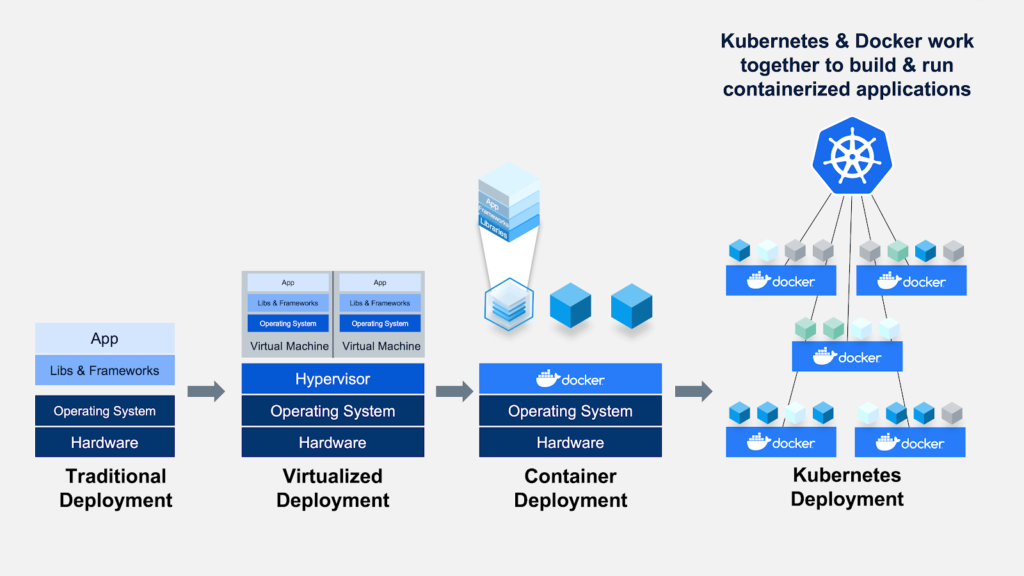
Building Cloud-Native Applications
Cloud-native technologies empower enterprises to adopt containers, microservices, immutable infrastructure, and service meshes to run their services in dynamic environments.
Immutability is one of the greatest strengths of container-based workloads. While designing your cloud-native architecture, ensure that your containers are immutable and that you don’t modify your applications inside an existing container. As a best practice, you should also package your application and all the dependencies into a container. When you need to make changes to your application or patch the running container, you should deploy a new container version. Applying the principle of immutability at the application level allows you to simplify your deployment strategy and make it more repeatable.
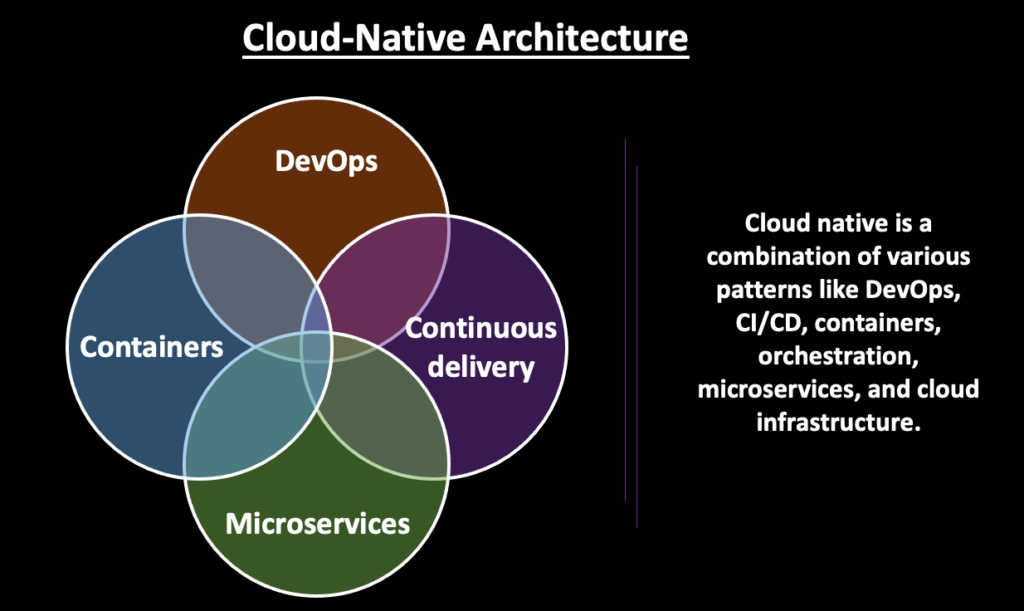
How to Make Your Applications Immutable
Embracing the concept of immutability in your architecture can be a paradigm shift. It does introduce complexity into your workflow, and requires a high level of automation and testing to verify the correctness of your implementation. You’ll also need to leverage various tools and managed services from your cloud providers to simplify development efforts.
Infrastructure as Code
Managing your IT infrastructure manually introduces several risks. Applying manual configurations is a slow process and can cause inconsistency and scalability issues. Infrastructure as code (IaC) allows you to use configuration files that a CI/CD pipeline can deploy. The ability to spin up your infrastructure in an automated way using a configuration file is a fast, efficient, and consistent process.
Configuration management tools like Terraform, Chef, Ansible, and Puppet let you specify how to configure your servers and how to protect your server from configuration drifts. You can avoid the problem of having servers that need manual configuration. But with the growth of cloud computing and the need for dynamic scaling of your infrastructure at runtime, these traditional configuration management tools fall short.
Containers
At the application layer, you can achieve immutability by using containers. Compared to legacy monolithic systems, implementing container-based deployments for microservices architecture is more straightforward. To handle dynamic workloads at runtime, you can have auto-scaling groups for your services so that you can scale up or down based on load.
Golden Images
You can also templatize your computing environment by creating a golden image and reusing it to set up more environments in an automated way. A golden image is an immutable object containing your standard configurations, latest security patches, and container agents used for monitoring, logging, security, etc. As a best practice, you should have a separate CI/CD pipeline to regularly build your golden images. This will ensure that there are no security vulnerabilities and that your environments are updated with the latest security patches.
Kubernetes Automated Health Checks
To implement an efficient strategy for immutability, you’ll need to have a proper monitoring and alerting strategy for your applications. When the application health checks fail, you’ll need to spin up a new application instance. Kubernetes can orchestrate your container workload and provide you automated health checks in the form of liveness probes. If your application goes down, Kubernetes will terminate the pod and spin up a new one.
Blue-Green Deployments
Blue-green deployments are a good fit for your application when dealing with immutable components. You can deploy two versions of your service into two identical environments (“blue” and “green”). The blue environment takes the live traffic on the current service version, and the green environment contains the new service version. Once testing is complete in the green environment, you can shift live traffic to the new environment.
There are several managed services in the cloud that support the blue/green deployment model. And you get zero downtime deployments with this strategy and can also easily roll back changes in case of issues.
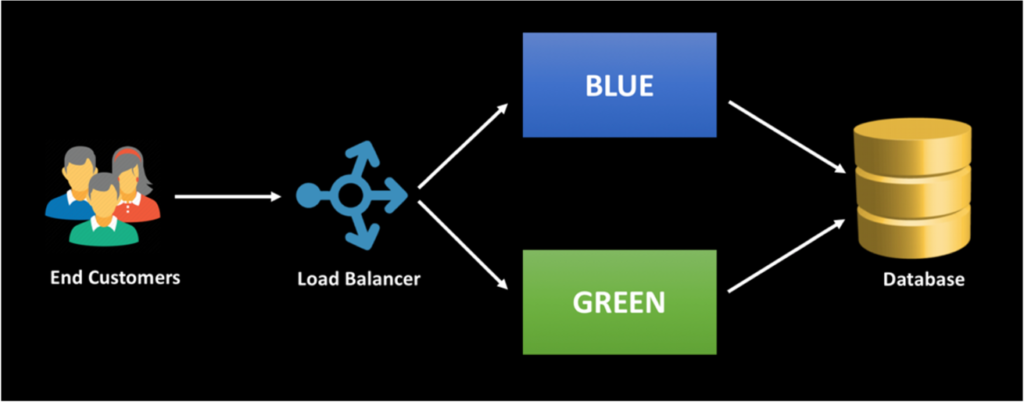
Conclusion
The migration of traditional applications to the cloud-native space requires automation of your IT infrastructure to increase service uptime and response time. The transition from pets to a cattle service model is crucial in your operational process, helping businesses provide better service with minimal downtime. Cloud-native applications embrace the cattle service model and scale in and out without tight coupling with the underlying server.
